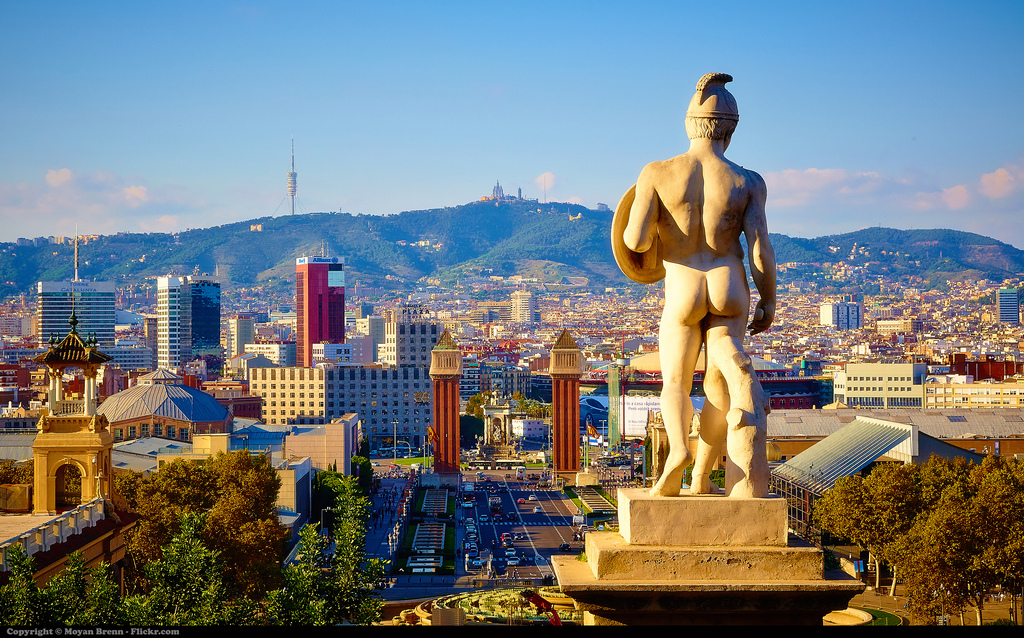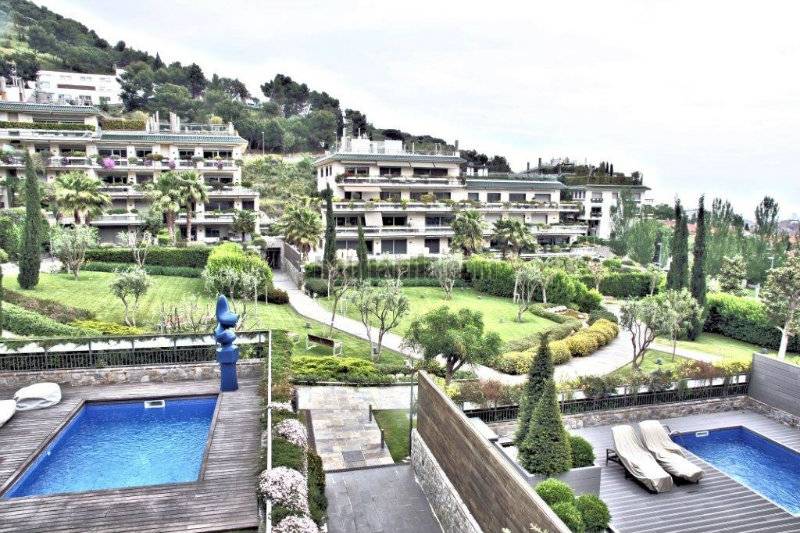
Since 1984, the city of Barcelona is divided administratively into ten districts, which in turn subdivide into a total of 73 districts, all very different and with nothing similar to each other; There are cool, downtown, student, beach, village, exclusive ... Before reading and start to locate, you can see the official map of the neighborhoods of Barcelona.
The best areas of Barcelona
In these next neighborhoods, you will find the best quality of life, the most valued houses, tranquility and little traffic, but it does not mean that in them you find the greatest daily comfort at services or communications in public transport.
District of Les Corts (3 districts)
Les Corts: It was an old municipality that was added to Barcelona, becoming a residential neighborhood of middle class. It acts as a bridge between the tranquility of the exclusive "high zone" and the hustle and bustle of the working-class neighborhood of Sants. It has the presence of the small neighborhood trade and the commercial axis is, above all, on Avenida Diagonal (with l'Illa Shopping Center as main attraction). In terms of housing, the large blocks of medium / medium-high quality predominate.
La Maternitat i Sant Ramon: This neighborhood located in the left peripheral area (between the municipality of l'Hospitalet de Llobregat and Pedralbes) is the result of the expansion of Les Corts towards the side of Llobregat. Due to its location, it is a gateway to the city, both along the Diagonal and Collblanc Street.
It is well-known for being one of the centers of university activity and also for hosting the well-known football stadium of Barcelona, Camp Nou. The commercial axes are in the Madrid Avenue and in the Road of Collblanc, although it includes other areas with great sports, university and sanitary equipment. In its wide streets and large apples, blocks of flats of medium or high height and medium or high quality predominate. The population that inhabits the neighborhood is middle class.

Pedralbes: It is one of the most exclusive residential areas of Barcelona, and therefore, the most expensive. Who has not heard of Pedralbes? It occupies the western peripheral zone of the city, from the sierra, to the more urban zone of the Diagonal. It is also characterized by being one of the areas more rested and isolated from the noise, with tree-lined streets and very quiet. Its main routes are the Avenida Pedralbes and Avenida d'Esplugues, although in general, it is a neighborhood with few shops and very dispersed; The majority, concentrated in the street Doctor Ferran. In the highest part of Pedralbes is where are the large and luxurious houses and mansions in gardens for the most fortunate; In the lower part, there are high-standing floors in isolated blocks and surrounded by private communal areas. Of course, it is inhabited by the upper class.
District Sarrià-Sant Gervasi (6 districts)
The Putget i Farró: It is formed by two parts, Putget to the north and Farró to the south. The Putget is a small mountain that extends between Sant Gervasi bordering with Vallcarca and the Penitents. In Farró the low houses with inner courtyards and the cottage stand out. In the heart of the neighborhood are the pleasant Gardens ofl Turó del Putget. It is inhabited by wealthy population of upper class, since in the past, the territory was the summer resort of the bourgeoisie.
Sarrià: For all its virtues, it is the most expensive neighborhood in Barcelona. Also located in the peripheral area (on the left slope of the Sierra de Collserola), it was the last autonomous municipality to be added to the city, thus becoming another neighborhood, but at the same time different, because it still preserves its identity and village atmosphere . They can be found from large single-family houses of low height, to luxury floors. It is a haven for the well-to-do middle class.
Sant Gervasi - La Bonanova: Its name distinguishes it from the neighboring district Sant Gervasi - Galvany, which corresponds to the lower part. The streets are especially inclined, since it is located in the environs of the Mountain range of Collserola. The most commercial streets are Mandri and Muntaner and in the high part there are several educational, social, religious and cultural centers. As for the type of buildings, we find from houses that form closed apples, isolated blocks with high-end floors and large luxury rooms. Of course, it is populated by upper-class people.
Sant Gervasi - Galvany: Closed by Gràcia and l'Esquerra de l'Eixample, it is the most urban, popular and commercial area of the "upper zone", since most of its streets are full of shops. There are buildings of all kinds, in a closed block, single-family and multi-family dwellings of low height and large floors of high standing. The type of population we find is diverse, middle-upper class in the central part and very high purchasing power in the left sector.
Les Tres Torres: High class residential neighborhood with wide tree-lined streets, pleasant and solitary. Although it hardly has commercial activity, it presents some equipment and services of great prestige. There are isolated half-height blocks with large high-end floors surrounded by private garden areas and also the presence of some luxurious villas. Like the other neighborhoods, it is inhabited by the more affluent population of Barcelona.
Vallvidrera, El Tibidabo and Les Planes: These three urban residential areas are located in the Catalan Coastal Range, in the Sierra de Collserola, totally separated from the plain and the urbanized territory of Barcelona. Predominant quality buildings, isolated single-family houses, both old towers, houses of more recent construction and are supplied by small businesses. The neighbors are middle-upper class.